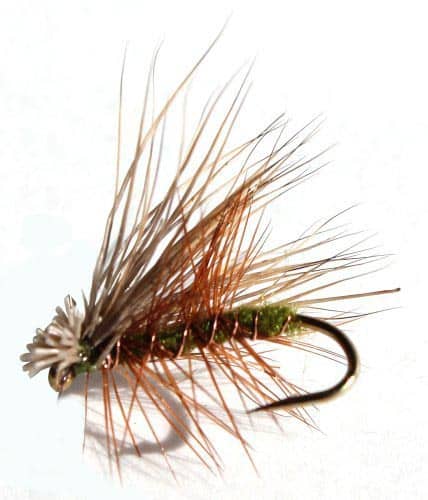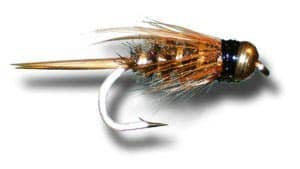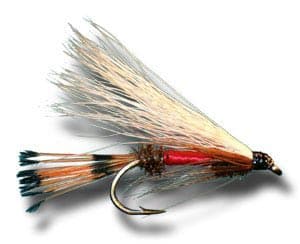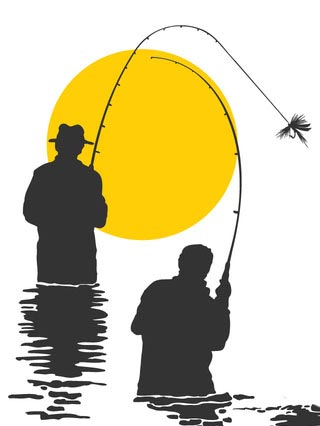Fly fishing. Those who enjoy it often claim it is the most relaxing and in-tune with nature means of connecting with nature. Anglers cast tiny lures resembling insects called flies and often tied by the angler in an attempt to deceive weary fish into striking.
When you are new to the sport, these tiny lures are themselves one of the reasons novices find the sport confusing rather than relaxing. There are hundreds, if not thousands, of designs and patterns, and remembering when or how to use each takes far more experience than knowing when to use a stick bait or inline spinner. But it does not need to be that hard, not if you focus on the basics.
I have no idea how many different fly patterns exist. It is impossible to say because many anglers tie their own flies and are always adding new twists or features to create their own designs. But, what I do know is that all flies can be grouped into three main categories – dry, nymph or streamer.
If the novice fly fisherman can learn the characteristics of these three types of fly, they can then begin to understand when and how to use each. Once this is accomplished, you can fish more successfully and build on your basic knowledge with practical experience. So, let me show you the basics of these three types of flies.
3 Main Types of Fishing Flies: Dry Flies
Dry flies are probably the most wildly known fly, the kind with which most novices associate. However, despite being highly recognized, they are not the most wildly used fly – but more about that later.
First, let’s discuss what a dry fly is. In the simplest terms, a dry fly is one which is designed to mimic naturally occurring insects and sits on the surface of the water.

If you have ever been streamside during an insect hatch, you probably noticed a significant number of similar appearing insects rising from the surface. This is because during the hatch nymphs, an earlier life stage during which the now emerging insects live in the water, are transforming into their flying stage and taking flight.
During this hatching process, the new insects can also be found scattered across the water’s surface, and this is what dry flies are imitating. To do this, dry flies are typically tied to resemble typical water insects such as mayflies, stoneflies, caddis, etc.
Fishing dry flies is not the most productive method of fly fishing as most fish species, especially trout, only spend approximately 25% of their time feeding on the surface. If a hatch is not occurring, it can be difficult to entice an otherwise weary fish to the top. That is when the other two forms of flies come into play.
But, if fish are rising, there is also nothing which compares to the excitement of actually seeing a fish torpedo towards and then inhale your fly. You instantly know you have a bit – you can see and feel it. For this reason, dry flies can be not only rewarding but also easy to master.
3 Main Types of Fishing Flies: Nymphs
As I mentioned earlier, many insects spend the first portion of their life living in the water, and it is this life stage nymph flies are designed to imitate.
Like dry flies, nymphs are tied to imitate the nymph life cycle of various insects including the caddis, stoneflies, and mayflies, which can also be tied as dry flies.
Unlike the dry fly, nymphs are designed to be fished below the surface and often weighted with wire wrapping or weighted beads. Because most fish spend the majority of time feeding below the surface, nymphs are the most productive flies.


Thus, it’s something which novices will want to include in their fly fishing arsenal to ensure they have the opportunity to catch fish no matter the conditions.
Because they are being fished below the surface, the angler loses the ability to see the strike, making it a bit harder to detect the strike of smaller fish. To overcome this, many anglers will add a strike indicator, or small surface float, to add a visual warning of the strike. These floats are also useful in keeping the nymph fly off the stream bottom and in the likely strike zone.
3 Main Types of Fishing Flies: Streamers

Streamers, like nymphs, are most often fished below the surface. However, unlike either of the other two types of flies, streamers do not resemble insects. Instead, streamers are meant to imitate large forms of bait such as leeches, crabs, crayfish, minnows and other baitfish.
Because they are fished below the surface, streamers are also a very productive method of fly fishing. Since they are much larger than either dry flies or nymphs, they are also an excellent means of targeting trophy fish or larger species that may be more inclined to wait for a bigger meal than the others offer.
Streamers are not a simple cast and forget fly; you do not cast them into a likely hole and wait for the bite. Instead, a streamer is cast into a target spot, somewhere a big fish is likely to hold, and then the angler pulls it through the water with a combination of long and short bursts.
These bursts are achievable by stripping the line with slight pauses which creates a motion similar to a wounded or frightened bait trying to get away. The streamers themselves are tied with flashy colors and material which pulses as it is pulled and paused, causing them to be more visually enticing to the waiting fish.

When a hungry fish does strike a streamer, it is often fast, hard, and violent, similar to the surface strike on a dry fly except under water. There is often little doubt you have a hit, and it is suggested that you use a heavier tippet and higher weight line than you would for either of the other types of flies.
Variations of the Main Types of Fishing Flies
As I stated earlier, there are an almost unlimited number of fly designs or patterns available, plus if you learn to tie your own flies, it is possible to make your own designs or modify others for difference performance. Some of the more common variations include terrestrials, attractors, or flies tied in tandem.
- Terrestrials are dry flies in that they are fished on the surface but do not resemble insects from a hatch. Instead, they are tied to resemble land insects such as ants, bees or grasshoppers, which may have fallen into the water and are unable to escape.
- Attractors can be tied in any of the three types described above, but are designed to represent any particular insect of bait fish. Instead, these flies are tied to with shiny material, bright colors, and dangling legs or wings to grab the attention of hungry fish and cause it to strike before it can realize it has not eaten its favorite meal.
- When an angler fish flies in tandem, they are attaching two or more flies to the same line so that they may fish two different types of feeding action. This will include a dry fly, to take advantage of surface action, and a nymph below the surface.

While this is a very productive means of fishing in most conditions, it is also an excellent method of determining which will be more productive before making your final selection.
The 3 Main Types of Fishing Flies and How to Use Them – Final Thoughts
So there you have it, the down and dirty on each of the three main types of fishing flies. To recap:
- Dry flies are fished on the surface and often resemble insects which may have hatched from or fallen into the water. Although not the most productive form of fly fishing, dry flies do offer the added excitement of seeing the fish strike and can be especially rewarding to novice anglers.
- Nymphs, on the other hand, are fished below the water’s surface and are tied to resemble an earlier life stage of the various insects which live in the water. To overcome the lack of being able to see the fish strike, many anglers will add a float or strike indicator to the line.
- Finally, the streamer is a larger fly tied to resemble non-insect baits the fish may be feeding on such as baitfish, leeches or crabs. Although they too are fished below the surface, an angler will not see the strike, but this is often overcome by the fact that streamer strikes are often harder, more violent than those when using dry flies or nymphs.